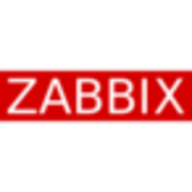

Nagios XI and Zabbix compete in the IT monitoring solutions category. Based on feature comparisons, Zabbix seems to have an upper hand due to its easy deployment and cost structure.
Features: Nagios XI offers extensive customization, high scalability, and a broad community support base, making it suitable for complex environments. It can be tailored with numerous plugins to monitor a wide array of network services. Zabbix, on the other hand, provides all-in-one monitoring capabilities that include automated discovery features, and scalability options. It's appreciated for being open-source, which means it is free and continually enhanced by a large support community.
Room for Improvement: Nagios XI struggles with configuration complexity and needs more intuitive interfaces and advanced clustering capabilities. Enhancements in incident management and improvements in multi-tenancy are necessary. Zabbix's graphical user interfaces need refinement for clarity, and its automation features could be further developed. Meanwhile, its documentation could be made clearer to simplify setup processes.
Ease of Deployment and Customer Service: Deploying Nagios XI can be complex, especially when scaling up infrastructure. While it offers responsive customer support, the costs can be high. Zabbix presents a simpler deployment process across environments due to its open-source nature, which helps in reducing costs. Its community-driven support is robust, providing extensive assistance.
Pricing and ROI: With Nagios XI, costs can be significant due to licensing, although the open-source Nagios Core is free. Organizations deeply integrating Nagios XI might achieve better ROI despite higher costs. Zabbix, being completely free and open-source, is popular among budget-conscious entities, offering significant savings without licensing fees and delivering satisfactory ROI through cost-effective monitoring solutions.
It is so straightforward that I have never had to use the support.
If the user interface isn’t presenting data well, it becomes difficult to manage when scaling.
Zabbix has high scalability.
Zabbix is very scalable and lightweight.
I would rate its scalability ten out of ten.
It is very stable.
Zabbix is very scalable and lightweight.
Zabbix is quite stable, and we haven't had any problems with Zabbix itself.
Many tools have poor user interfaces, making them hard to manage and navigate.
The GUI could be improved. It's a bit too basic.
The only issue I can note is that it's Linux-based, and Linux documentation is not the best.
We are using the free, open-source version.
The pricing for the Nagios XI product is good and better than other solutions.
It is literally free.
Nagios XI simplifies our setup and reduces the time spent configuring monitoring tools.
The alerting system is very effective.
If disk usage surpasses a threshold, say 70%, I receive alerts and can take proactive action.
Zabbix is Linux-based open-source software, and the main use case is to reduce costs.
Zabbix has a lot of features, including monitoring, status updates, and collecting information telemetry from storages and servers as well.
| Product | Market Share (%) |
|---|---|
| Zabbix | 11.4% |
| Nagios XI | 3.1% |
| Other | 85.5% |


| Company Size | Count |
|---|---|
| Small Business | 22 |
| Midsize Enterprise | 17 |
| Large Enterprise | 21 |
| Company Size | Count |
|---|---|
| Small Business | 53 |
| Midsize Enterprise | 23 |
| Large Enterprise | 34 |
Nagios XI provides monitoring of all mission-critical infrastructure components, including applications, services, operating systems, network protocols, systems metrics, and network infrastructure. Third-party add-ons provide tools for monitoring virtually all in-house and external applications, services, and systems.
Nagios XI uses a powerful Core 4 monitoring engine that provides users with the highest levels of server monitoring performance. This high degree of performance enables nearly limitless scalability and monitoring powers.
With Nagios XI, stakeholders can check up on their infrastructure status using the role-based web interface. Sophisticated dashboards enable access to monitoring information and third-party data. Administrators can easily set up permissions so users can only access the infrastructure they are authorized to view.
Nagios XI Benefits and Features
Some of the benefits and top features of using Nagios XI include:
Reviews from Real Users
Nagios XI stands out among its competitors for a number of reasons. Several major ones are its integration options and monitoring abilities, as well as its alerting features.
David P., a senior DevOps engineer at EML Payments Ltd, writes, “We use Nagios as a network discovery tool. We use Nagios to maintain our uptime statistics and to monitor our services. It has allowed us to be much more sophisticated in our monitoring and alerting.”
An IT-OSS manager at a comms service provider notes, “Nagios XI has a custom API feature, and we can expose custom APIs for our integration. This is a great feature.”
Zabbix is an open-source monitoring software that provides real-time monitoring and alerting for servers, networks, applications, and services.
It offers a wide range of features including data collection, visualization, and reporting.
With its user-friendly interface and customizable dashboards, Zabbix helps organizations ensure the availability and performance of their IT infrastructure.
We monitor all Network Monitoring Software reviews to prevent fraudulent reviews and keep review quality high. We do not post reviews by company employees or direct competitors. We validate each review for authenticity via cross-reference with LinkedIn, and personal follow-up with the reviewer when necessary.